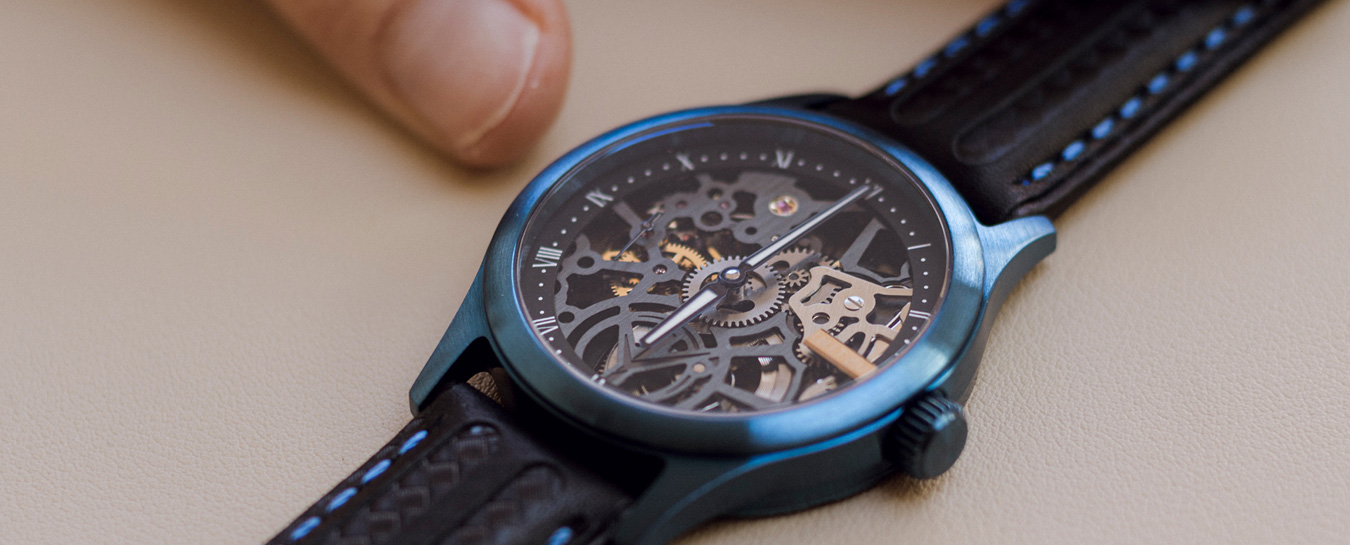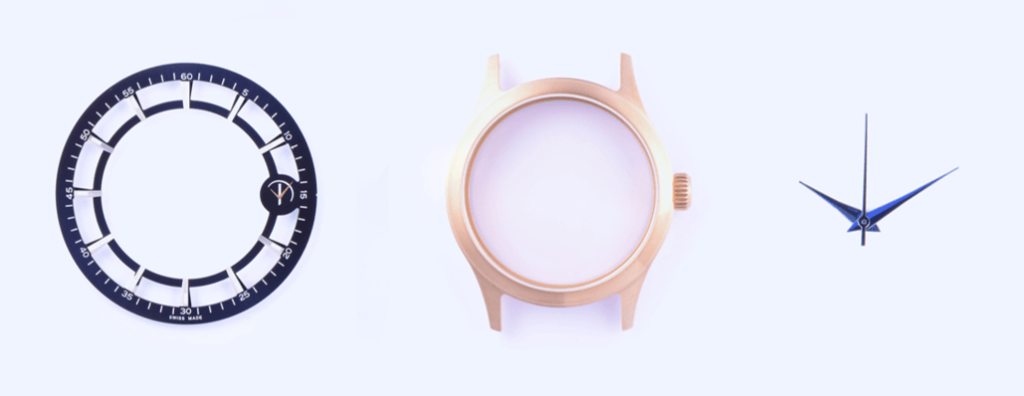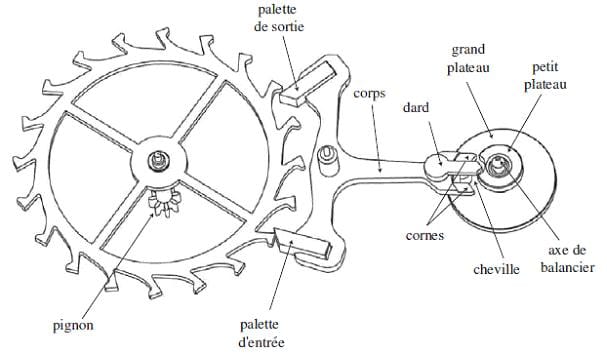This article looks at the functioning of a mechanical watch movement (i.e. one that has no electronic parts) with manual winding.

Although many technical and material improvements have taken place, the functioning of a mechanical movement has not fundamentally changed since the 19th century. Let’s look at it in detail! A watch consists of two parts :
The first thing to know is that a watch is a combination of external parts which are the:
- strap
- dial
- hands
- case

the movement which can be broken down into the:
- ébauche” (or blank) comprising the mainplate, jewels, bridges, gears, pinions, winding stem and lubricant
- mainspring
- escapement
- regulating organ, comprising the balance wheel, balance spring and anti-shock system
The winding stem, balance wheel and escapement
Whereas an electronic watch runs off the power from a battery, a mechanical watch gets its energy through the winding stem. We talk about “winding a watch” but what we are actually doing when we turn the winding stem is tighten an S-shaped spring. This spring, called the mainspring, accumulates energy which it releases in controlled amounts to the rest of the movement. The mainspring is coiled inside a part known as the barrel. As it unwinds, it causes the barrel to rotate, and this rotation causes the other gears (collectively known as the geartrain) to rotate. The speed at which the gears rotate is controlled by the balance wheel.

The balance wheel is how the movement keeps regular time. It swings back and forth and, as it does, it interacts with the escapement which keeps it moving. This movement is passed on to the gears which drive the hands.
The escapement is one of the most difficult parts to manufacture. Its function is to transfer energy to the balance wheel so that it continues to swing back and forth (oscillate, in watchmaking language) at a given rate. The energy supplied by the escapement must compensate for the energy lost in the form of friction when the balance wheel makes one swing back or forth. The number of vibrations per hour corresponds to the frequency of the movement.
The higher the frequency, the more precisely the balance wheel swings. An alternation is the equivalent of half an oscillation performed by the balance wheel. These oscillations are what make the ticking sound.
During a vibration, the escapement moves in three stages :

Unlocking
One of the teeth of the escape wheel is resting against the locking face of the entry pallet, hence the wheel is blocked. The impulse jewel, which is attached to the balance roller, enters the notch at the end of the lever, between the horns. This impulse jewel, through the inertia of the balance wheel, causes the lever to rotate round its axis. The entry pallet (on the left) lifts while the exit pallet (on the right) descends This unlocks the escape wheel, allowing the gears to rotate and the mainspring to unwind.
Impulse
One of the teeth of the escape wheel is resting against the impulse face of the entry pallet. During this phase, torque from the escape wheel is transferred via the pallet to the lever, then via the horns and the impulse jewel to the balance. The rotation of the lever causes the entry pallet to lift while the exit pallet descends. After rotating 35°, the entry pallet is no longer in contact with an escape wheel tooth, hence energy is no longer transferred. This is the end of the impulse phase and the beginning of the drop phase.
Drop
The escape wheel tooth is no longer in contact with the entry pallet. The escape wheel can therefore rotate while the lever comes into contact with a pin. The escape wheel turns until one of its teeth strikes the locking face of the exit pallet. During this drop phase, the balance completes its vibration.
During the unlocking and drop phases, the mainspring does not unwind hence the escape wheel does not rotate. This explains why a watch can run for 50 hours without having to be wound.
Two vibrations of the balance make one oscillation during which the escape wheel moves by one tooth. The balance wheel swings in alternating directions with each vibration.
Most balance wheels have a 4 Hz frequency. This equals four oscillations or eight vibrations per second.
To summarise, the balance wheel moves in alternating directions. The impulse jewel on the roller imparts movement via the lever which causes the escape wheel to rotate (or not to rotate). If the escape wheel is “allowed” to rotate, the mainspring partially unwinds, releasing energy that is transferred through the geartrain to the escape wheel. The energy from the escape wheel is transferred to the balance wheel through the lever and its pallets.
Why does a watch run slow?
Even the most accurate mechanical watch gains or loses a few seconds a day. Various factors can influence a watch’s precision. We’ll look at three of them.
A watch is sensitive to changes in its physical environment, such as temperature, pressure, humidity or magnetic fields. For example, when the temperature rises, the materials traditionally used to make the springs and balance wheel dilate. This alters the stiffness of the spring and the inertia of the balance, which affects the frequency of the movement.
Friction is inevitable in a mechanism and is another factor that can affect the movement’s precision. There are two types of friction: dry friction (contact between solid surfaces) and fluid friction (contact between fluids such as air). Friction is influenced by natural wear to materials or lubricants, and by corrosion.
A watch should be serviced at least every five years (taken apart, cleaned, reassembled and lubricated). Otherwise, the lubricants dry out or friction causes tiny particles to form that deposit themselves between the gears’ teeth, causing the watch to run slow.
If you’re mad about watches and would like to get close to the mechanisms under the dial, an Initium workshop is your chance to take apart then reassemble a mechanical watch movement. You can sign up for one of our classes and choose from a wide range of top-quality components which you’ll use to build your very own Swiss mechanical watch.